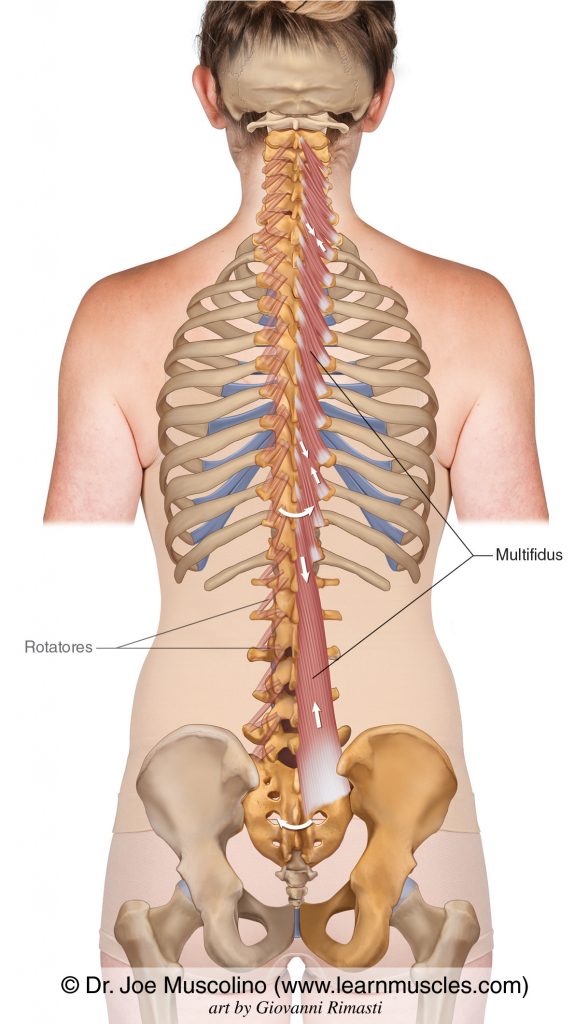- Click here for access to the full Anatomy Glossary.
- Right click on the image for a downloadable file of this muscle.
- Use of this artwork requires proper credit to be given (Permission: Dr. Joe Muscolino. www.learnmuscles.com – art work Giovanni Rimasti)

The Multifidus is a member of the Transversospinalis (Paraspinal*) group, composed of:
- Semispinalis
- Multifidus
- Rotatores
*The term paraspinal usually denotes the muscles of the erector spinae group as well as the muscles of the transversospinalis group.
The Multifidus has three parts: Multifidus Lumborum, Multifidus Thoracis, Multifidus Cervicis.
Further, there are shorter Multifidus Brevi and longer Multifidus Longi.
ATTACHMENTS:
- Sacrum to the axis (C2).
- The most inferior attachments are onto the sacrum, PSIS, and sacroiliac ligament.
- Inferior attachments in the lumbar region: mamillary processes.
- Inferior attachments in the thoracic region: transverse processes.
- Inferior attachments in the cervical region: articular processes.
- Superior attachments are onto spinous processes, as high as the axis (C2).
ACTIONS:
- Extends the neck and trunk at the spinal joints.
- Laterally flexes the neck and trunk at the spinal joints.
- Contralaterally rotates the neck and trunk at the spinal joints.
- Anteriorly tilts the pelvis at the lumbosacral joint.
- Ipsilaterally elevates the pelvis at the lumbosacral joint.
NOTES:
- Transversospinalis musculature generally runs from transverse processes inferiorly (transverso) to spinous processes superiorly (spinalis).
- Multifidus musculature attaches from the transverse process of a vertebra below to the spinous process of a vertebra 3-4 levels above (3 levels: brevi; 4 levels: longi).
- The multifidus’ inferior attachments are actually onto mamillary processes in the lumbar spine and articular processes in the cervical spine.
- The multifidus is the largest muscle in the lumbar region.
